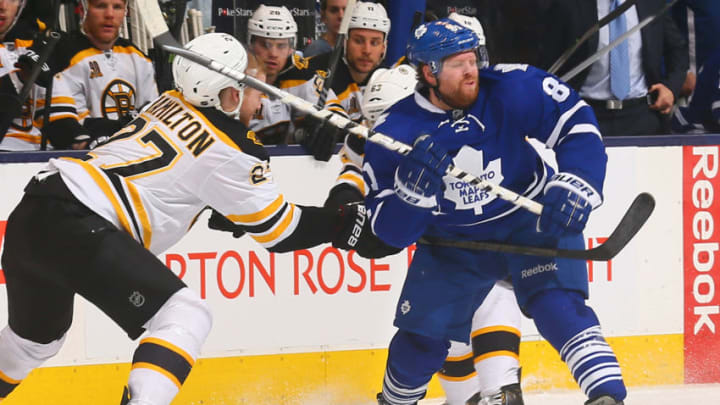
The Fleecing
Date: June 24, 2006
Leafs Acquire: Andrew Raycroft
Bruins Acquire: Tuukka Rask
For most of the trade history between these two franchises, the biggest steal was the Toronto Maple Leafs getting Ian Turnbull out of a 44-year-old Jacques Plante. Yet on Draft Day 2006, John Ferguson Jr. somehow made a worse deal.
Simply put, it’s unfathomable how bad this trade is. Any and all justifications for the trade never made sense, whether the day of the trade or 14 years later.
When the trade was made, Andrew Raycroft was two years removed from his Calder winning season, an award he won at the advanced age of 23. His 2005-06 season was atrocious, seeing his save percentage drop from .926 in his Calder winning year to a .879.
Raycroft allowed 18.64 more goals than average in just 30 games. Tim Thomas had a .917 SV% that year. Even Hannu Toivonen, a 21-year-old rookie, had a .914 SV%.
Despite all of the signs pointing towards it being a bad decision, JFJ decided that trading one of the top goaltending prospects league-wide was a good idea.
Rask was one year removed from being drafted in the first round and was fresh off of a stellar performance at the World Juniors. At just 18 years of age, Rask had put up a .926 SV% in the Finnish Liiga. All the signs pointed towards him becoming a number one goaltender in the NHL.
Justin Pogge was the other top goaltending prospect Toronto had. In having two high-end prospects in net, part of the justification of the trade was that the Leafs could find a fix in net in the short term while still holding onto a future starter down the road.
That being said, Pogge was undoubtedly a lesser prospect than Rask. He was a later pick having been drafted in the third round and was a year older than Rask, though he did have a similarly excellent World Juniors and had also put up a .926 SV% in the WHL.
Pogge was a good prospect, but Rask was a great prospect. For reference, Rask was ranked the 37th best prospect in The Hockey News’ 2006 Future Watch, while Pogge was 73rd. Rask was the fifth overall goaltender, Pogge was 10th.
From Day One this trade was a terrible idea.
It’s stunning how poorly managed the Leafs used to be. Multiple goaltenders were on the market, Raycroft had become the Bruins third-string goaltender, and interest in him reportedly peaked around a second-round pick. Toronto still decided it was best to offer such a high-level prospect.
We all know how this one played out too.
Raycroft, shockingly, never found his 2003-04 form again. Although he played 72 games for Toronto in 2006-07, he was still a sub .900 netminder. By the start of 2007-08, he was already a backup, before leaving Toronto the following season.
Rask, on the other hand, made his debut that 2007-08 season. By 2009 he was a top-level goaltender, and after a few years backing up Tim Thomas, became one of the premier goaltenders in the NHL through 2020.
If John Ferguson Jr. had just been patient with the goalie market in 2006, the Leafs would’ve had their goaltending situation sorted for the past decade.
Instead, the decision to pay top level for a 25-year-old two years removed from his only NHL success led to the goaltending position being a question mark for the franchise for the same period of time.
Next time in the Toronto Maple Leafs trade history is another division rival in the Buffalo Sabres.
